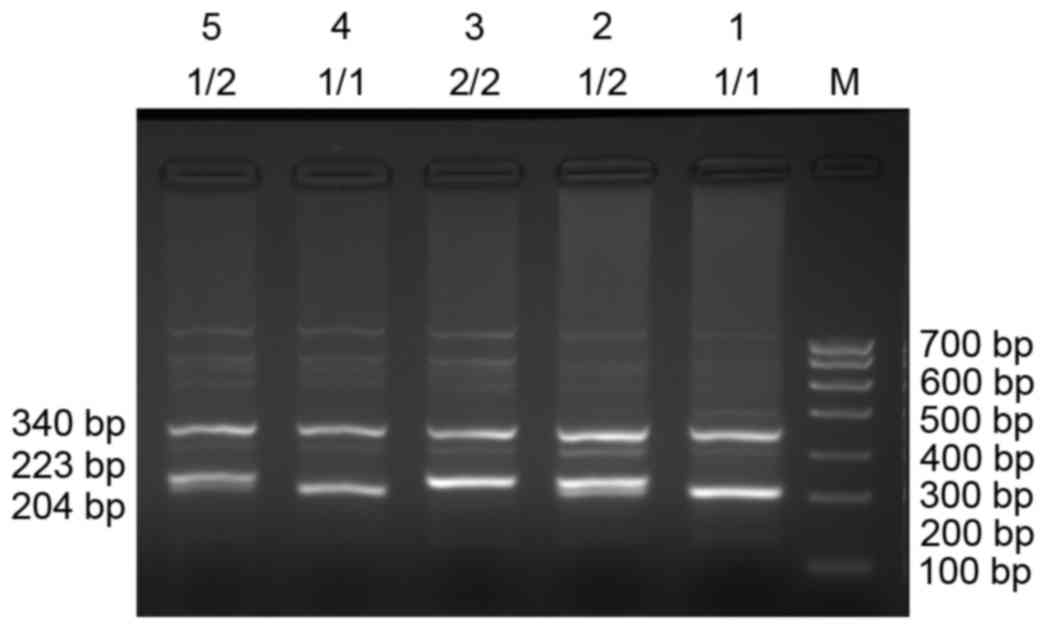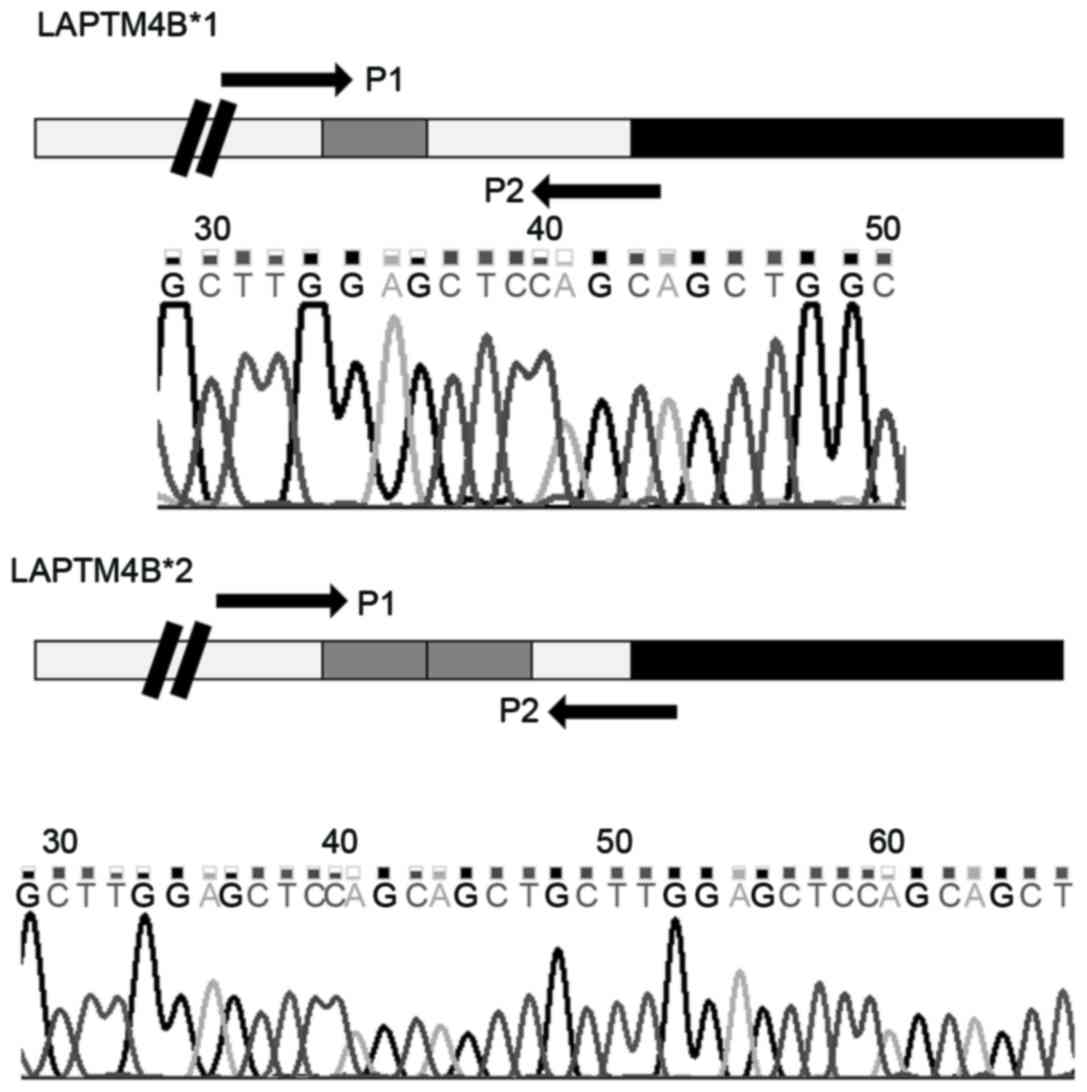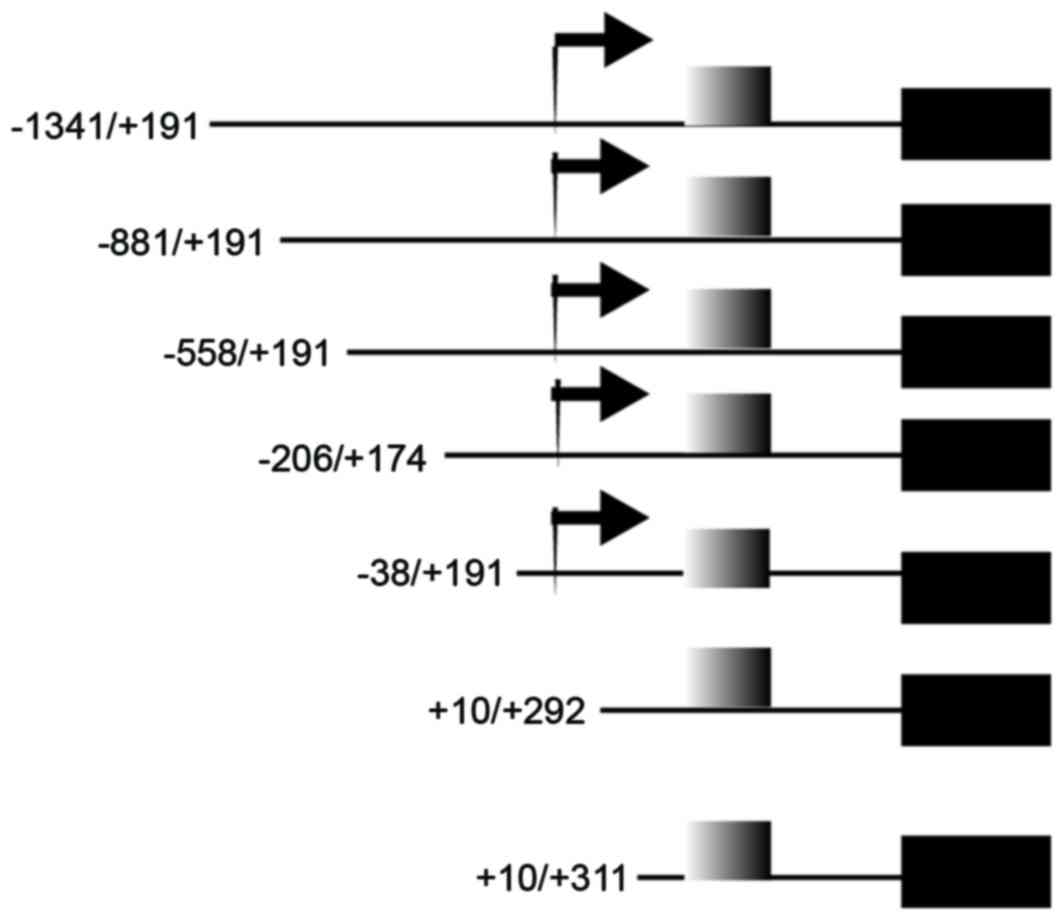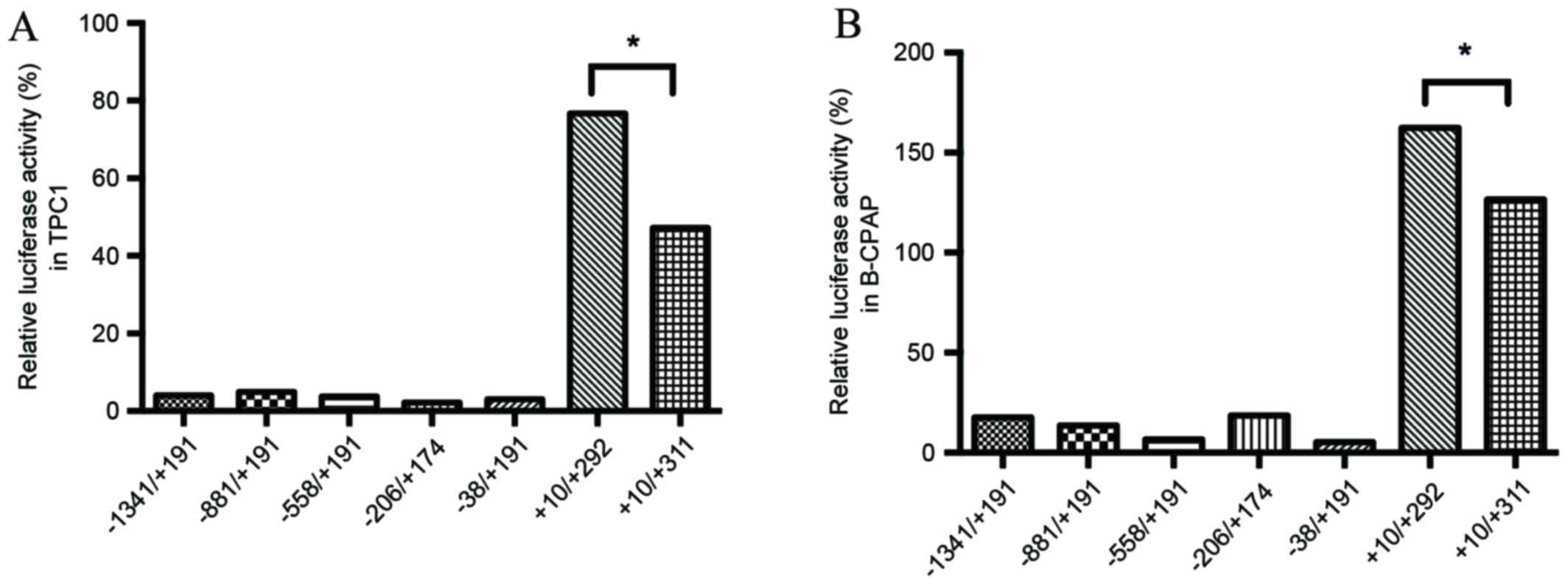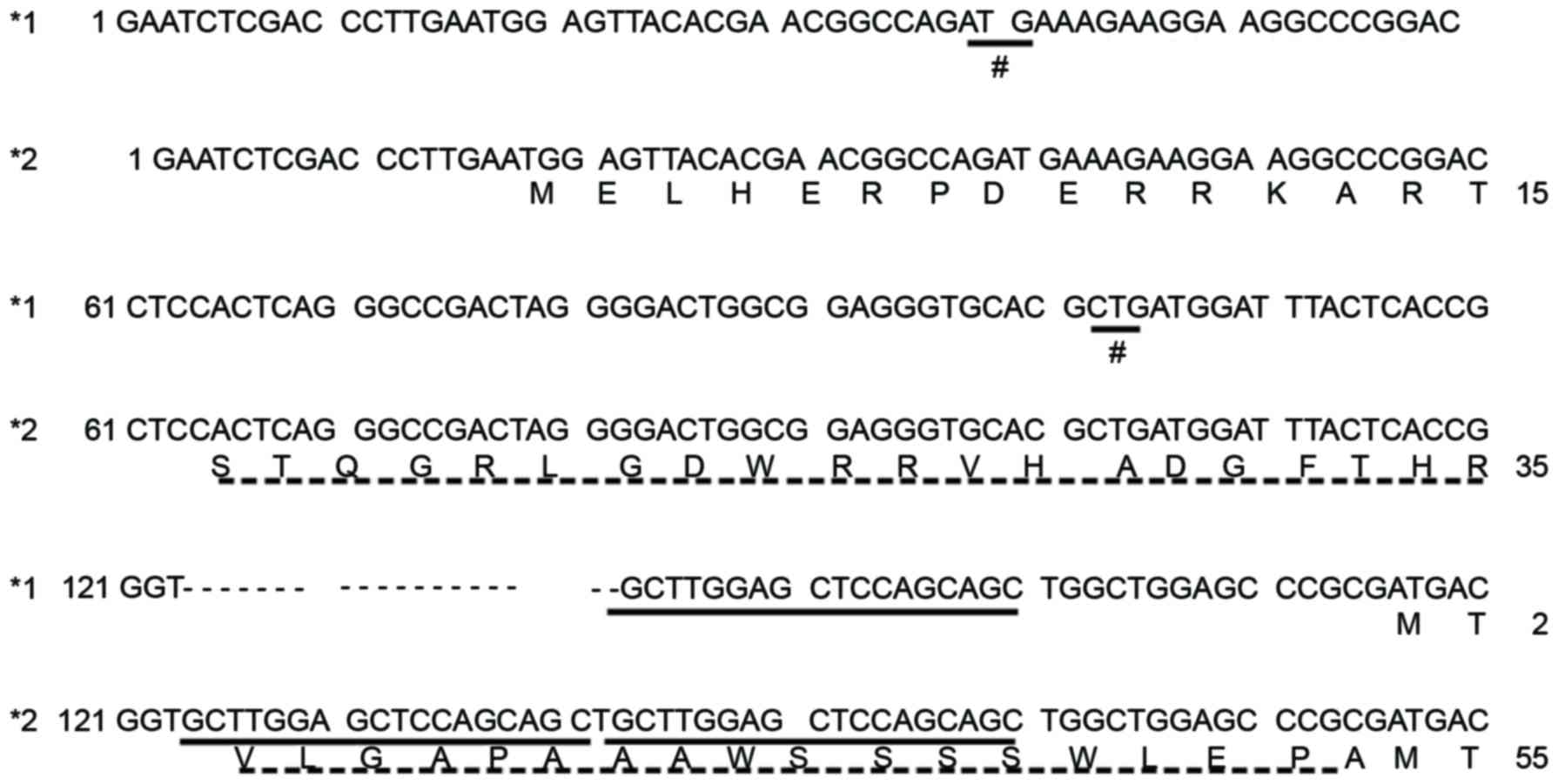|
1
|
Ito Y, Nikiforov YE, Schlumberger M and
Vigneri R: Increasing incidence of thyroid cancer: controversies
explored. Nat Rev Endocrinol. 9:178–184. 2013. View Article : Google Scholar : PubMed/NCBI
|
|
2
|
Siegel R, Ma J, Zou Z and Jemal A: Cancer
statistics, 2014. CA Cancer J Clin. 64:9–29. 2014. View Article : Google Scholar : PubMed/NCBI
|
|
3
|
Aschebrook-Kilfoy B, Grogan RH, Ward MH,
Kaplan E and Devesa SS: Follicular thyroid cancer incidence
patterns in the United States, 1980–2009. Thyroid. 23:1015–1021.
2013. View Article : Google Scholar : PubMed/NCBI
|
|
4
|
Davies L and Welch H: Current thyroid
cancer trends in the United States. JAMA Otolaryngol Head Neck
Surg. 140:317–322. 2014. View Article : Google Scholar : PubMed/NCBI
|
|
5
|
Vaccarella S, Dal Maso L, Laversanne M,
Bray F, Plummer M and Franceschi S: The impact of diagnostic
changes on the rise in thyroid cancer incidence: A population-based
study in selected high-resource countries. Thyroid. 25:1127–1136.
2015. View Article : Google Scholar : PubMed/NCBI
|
|
6
|
Vergamini LB, Frazier AL, Abrantes FL,
Ribeiro KB and Rodriguez-Galindo C: Increase in the incidence of
differentiated thyroid carcinoma in children, adolescents and young
adults: A population-based study. J Pediatr. 164:1481–1485. 2014.
View Article : Google Scholar : PubMed/NCBI
|
|
7
|
Pellegriti G, Frasca F, Regalbuto C,
Squatrito S and Vigneri R: Worldwide increasing incidence of
thyroid cancer: Update on epidemiology and risk factors. J Cancer
Epidemiol. 2013:9652122013. View Article : Google Scholar : PubMed/NCBI
|
|
8
|
Xu L, Port M, Landi S, Gemignani F,
Cipollini M, Elisei R, Goudeva L, Müller JA, Nerlich K, Pellegrini
G, et al: Obesity and the risk of papillary thyroid cancer: A
pooled analysis of three case-control studies. Thyroid. 24:966–974.
2014. View Article : Google Scholar : PubMed/NCBI
|
|
9
|
Zou M, Baitei EY, Al-Rijjal RA, Parhar RS,
Al-Mohanna FA, Kimura S, Pritchard C, Binessa HA, Alzahrani AS,
Al-Khalaf HH, et al: TSH overcomes Braf(V600E)-induced senescence
to promote tumor progression via downregulation of p53 expression
in papillary thyroid cancer. Oncogene. 35:1909–1918. 2016.
View Article : Google Scholar : PubMed/NCBI
|
|
10
|
Chen GG, Vlantis AC, Zeng Q and van
Hasselt CA: Regulation of cell growth by estrogen signaling and
potential targets in thyroid cancer. Curr Cancer Drug Targets.
8:367–377. 2008. View Article : Google Scholar : PubMed/NCBI
|
|
11
|
Yang H, Lin M, Xiong F, Yang Y, Nie X,
McNutt MA and Zhou R: Combined lysosomal protein transmembrane 4
beta-35 and argininosuccinate synthetase expression predicts
clinical outcome in hepatocellular carcinoma patients. Surg Today.
41:810–817. 2011. View Article : Google Scholar : PubMed/NCBI
|
|
12
|
Shao GZ, Zhou RL, Zhang QY, Zhang Y, Liu
JJ, Rui JA, Wei X and Ye DX: Molecular cloning and characterization
of LAPTM4B, a novel gene upregulated in hepatocellular carcinoma.
Oncogene. 22:5060–5069. 2003. View Article : Google Scholar : PubMed/NCBI
|
|
13
|
Fan M, Liu Y, Zhou R and Zhang Q:
Association of LAPTM4B gene polymorphism with breast cancer
susceptibility. Cancer epidemiol. 36:364–368. 2012. View Article : Google Scholar : PubMed/NCBI
|
|
14
|
Liu Y, Zhang QY, Qian N and Zhou RL:
Relationship between LAPTM4B gene polymorphism and susceptibility
of gastric cancer. Ann Oncol. 18:311–316. 2007. View Article : Google Scholar : PubMed/NCBI
|
|
15
|
Deng LJ, Zhang QY, Liu B and Zhou RL:
Relationship between LAPTM4B gene polymorphism and susceptibility
of lung cancer. Beijing Da Xue Xue Bao. 37:302–305. 2005.(In
Chinese). PubMed/NCBI
|
|
16
|
Cheng XJ, Xu W, Zhang QY and Zhou RL:
Relationship between LAPTM4B gene polymorphism and susceptibility
of colorectal and esophageal cancers. Ann Oncol. 19:527–532. 2008.
View Article : Google Scholar : PubMed/NCBI
|
|
17
|
Meng F, Li H, Zhou R, Luo C, Hu Y and Lou
G: LAPTM4B gene polymorphism and endometrial carcinoma risk and
prognosis. Biomarkers. 18:136–143. 2013. View Article : Google Scholar : PubMed/NCBI
|
|
18
|
Meng F, Song H, Luo C, Yin M, Xu Y, Liu H,
Zhou R and Lou G: Correlation of LAPTM4B polymorphisms with
cervical carcinoma. Cancer. 117:2652–2658. 2011. View Article : Google Scholar : PubMed/NCBI
|
|
19
|
Yang H, Zhai G, Ji X, Xiong F, Su J and
McNutt MA: Correlation of LAPTM4B polymorphisms with gallbladder
carcinoma susceptibility in Chinese patients. Med Oncol.
29:2809–2813. 2012. View Article : Google Scholar : PubMed/NCBI
|
|
20
|
Xu Y, Liu Y, Zhou R, Meng F, Gao Y, Yang
S, Li X, Yang M and Lou G: LAPTM4B polymorphisms is associated with
ovarian cancer susceptibility and its prognosis. Jpn J Clin Oncol.
42:413–419. 2012. View Article : Google Scholar : PubMed/NCBI
|
|
21
|
Zhang M, Zhou R, Xu J and Zhang Q:
Relationship between LAPTM4B gene polymorphism and susceptibility
of malignant melanoma in Chinese patients. Transl Oncol. 7:638–643.
2014. View Article : Google Scholar : PubMed/NCBI
|
|
22
|
Wang B, Xu J, Zhou R and Zhang Q:
Association of LAPTM4B gene polymorphism with nasopharyngeal
carcinoma susceptibility in a Chinese population. Med Oncol.
30:4702013. View Article : Google Scholar : PubMed/NCBI
|
|
23
|
Cuccurullo V and Mansi L: AJCC Cancer
Staging Handbook: From the AJCC Cancer Staging Manual (7th
edition). European Journal of Nuclear Medicine and Molecular
Imaging. 38:408. 2011. View Article : Google Scholar
|
|
24
|
Zhang M, Xu JJ, Zhou RL and Zhang QY: cAMP
responsive element binding protein-1 is a transcription factor of
lysosomal-associated protein transmembrane-4 Beta in human breast
cancer cells. PLoS one. 8:e575202013. View Article : Google Scholar : PubMed/NCBI
|
|
25
|
Aschebrook-Kilfoy B, Ward MH, Sabra MM and
Devesa SS: Thyroid cancer incidence patterns in the United States
by histologic type, 1992–2006. Thyroid. 21:125–134. 2011.
View Article : Google Scholar : PubMed/NCBI
|
|
26
|
Chen AY, Jemal A and Ward EM: Increasing
incidence of differentiated thyroid cancer in the United States,
1988–2005. Cancer. 115:3801–3807. 2009. View Article : Google Scholar : PubMed/NCBI
|
|
27
|
Zhao J, Huang X, Yang M, Li M and Zheng J:
Association between the FTOrs8050136 polymorphism and cancer risk:
A meta-analysis. Fam cancer. 15:145–153. 2016. View Article : Google Scholar : PubMed/NCBI
|
|
28
|
Lee YC, Chung JH, Kim SK, Rhee SY, Chon S,
Oh SJ, Hong IK and Eun YG: Association between interleukin
17/interleukin 17 receptor gene polymorphisms and papillary thyroid
cancer in Korean population. Cytokine. 71:283–288. 2015. View Article : Google Scholar : PubMed/NCBI
|
|
29
|
Soares P, Trovisco V, Rocha AS, Lima J,
Castro P, Preto A, Máximo V, Botelho T, Seruca R and
Sobrinho-Simões M: BRAF mutations and RET/PTC rearrangements are
alternative events in the etiopathogenesis of PTC. Oncogene.
22:4578–4580. 2003. View Article : Google Scholar : PubMed/NCBI
|
|
30
|
Horn-Ross PL, Canchola AJ, Ma H, Reynolds
P and Bernstein L: Hormonal factors and the risk of papillary
thyroid cancer in the California Teachers Study cohort. Cancer
Epidemiol Biomarkers Prev. 20:1751–1759. 2011. View Article : Google Scholar : PubMed/NCBI
|
|
31
|
Milkereit R, Persaud A, Vanoaica L, Guetg
A, Verrey F and Rotin D: LAPTM4b recruits the LAT1-4F2hc Leu
transporter to lysosomes and promotes mTORC1 activation. Nat
commun. 6:72502015. View Article : Google Scholar : PubMed/NCBI
|
|
32
|
Meng F, Chen X, Song H and Lou G: LAPTM4B
down regulation inhibits the proliferation, invasion and
angiogenesis of HeLa cells in vitro. Cell Physiol Biochem.
37:890–900. 2015. View Article : Google Scholar : PubMed/NCBI
|
|
33
|
Zhou L, He XD, Yu JC, Zhou RL, Yang H, Qu
Q and Rui JA: Overexpression of LAPTM4B promotes growth of
gallbladder carcinoma cells in vitro. Am J Surg. 199:515–521. 2010.
View Article : Google Scholar : PubMed/NCBI
|
|
34
|
Zhou L, He XD, Yu JC, Zhou RL, Shan Y and
Rui JA: Overexpression of LAPTM4B-35 attenuates epirubucin-induced
apoptosis of gallbladder carcinoma GBC-SD cells. Surgery.
150:25–31. 2011. View Article : Google Scholar : PubMed/NCBI
|
|
35
|
Tan X, Thapa N, Sun Y and Anderson RA: A
kinase-independent role for EGF receptor in autophagy initiation.
Cell. 160:145–160. 2015. View Article : Google Scholar : PubMed/NCBI
|
|
36
|
Liu X, Xiong F, Wei X, Yang H and Zhou R:
LAPTM4B-35, a novel tetratransmembrane protein and its PPRP motif
play critical roles in proliferation and metastatic potential of
hepatocellular carcinoma cells. Cancer sci. 100:2335–2340. 2009.
View Article : Google Scholar : PubMed/NCBI
|















